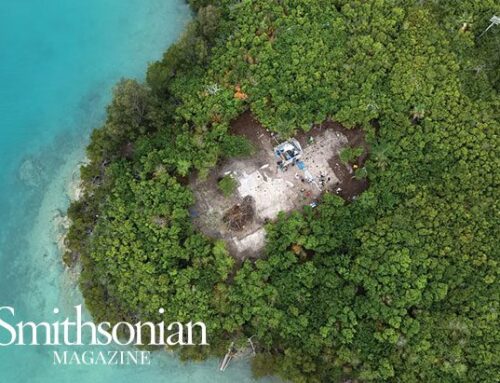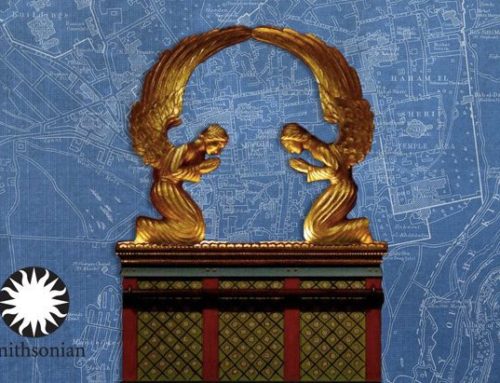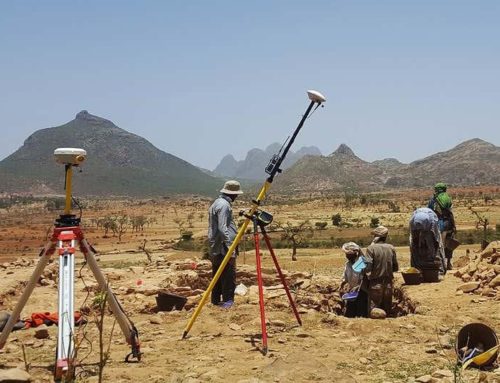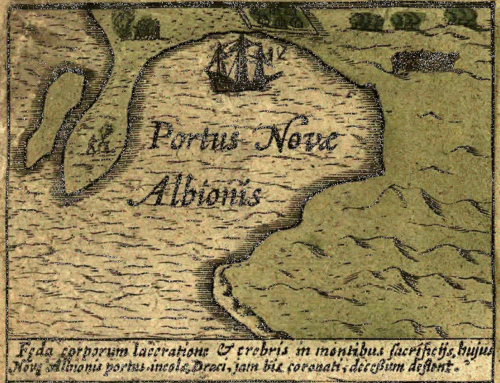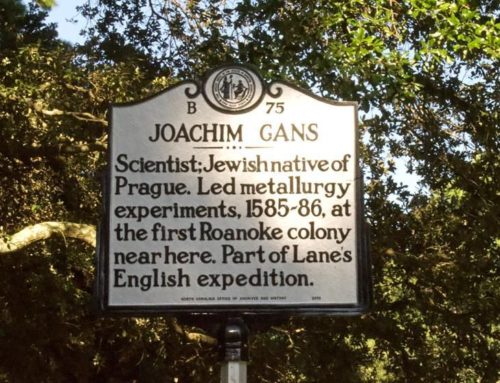 As archaeologists worldwide help recover looted artifacts, they worry for the safety of the great sites of early civilization.
As archaeologists worldwide help recover looted artifacts, they worry for the safety of the great sites of early civilization.
“Oh your city! Oh your house! Oh your people!” wrote a scribe of ancient Sumer, portraying a dark time in the land that would become Iraq. That 4,000-year-old lament sounded all too contemporary in April as Baghdad mobs stormed Iraq’s National Museum, broke heads off ancient statues, ransacked files and made off with an unknown number of priceless artifacts. Despite pleas from Iraqi curators, U.S. forces had no orders to intervene. “Turmoil descended upon the land,” mourned the Sumerian scribe. “The statues that were in the treasury were cut down . . . there were corpses floating in the Euphrates; brigands roamed the roads.”
For eight decades, archaeologists had deposited thousands of artifacts and manuscripts at the museum, documenting 10,000 years of civilization that gave the world writing, mathematics and a host of technologies—from paved roads and the wheels that ran on them to astronomical observatories. Despite 20 years of war, repression and economic sanctions in Iraq, archaeologists have continued to work the plain between the Tigris and Euphrates rivers. It was in such fabled cities as Uruk, Ashur, Babylon, Hatra and Samarra that complex agriculture, literacy and organized international trade originated. “It is a most remarkable place,” says archaeologist John Russell of the Massachusetts College of Art. “The people there put together all the pieces of civilization. And it looks like us.”
In March, fearing that the museum might be damaged by Coalition bombing, curators moved many of its 170,000 objects to basement storerooms and vaults. But within hours of the arrival of U.S. troops, looters and skilled thieves overwhelmed the few Iraqi guards at the museum and headed for the storerooms. Since then, several important objects have been brought back to the museum thanks to radio broadcasts urging their return, but Iraq’s newly opened borders will make it easy for thieves to feed artifacts to the international antiquities market. Among the most-prized missing objects: the Warka Vase, a sacred limestone piece from Uruk; a marble head of Poseidon; and an Assyrian ivory carving. Scholars initially compared the losses to the destruction of the Library of Alexandria. On April 29, Donny George, director of research for the Iraqi State Board of Antiquities, called the looting “the crime of the century. And it’s not just a loss for the Iraqi people, but a loss for all mankind.”
In late April, amid reports that the losses may not be as numerous as first feared, archaeologists, conservation experts and museum representatives—working with Interpol, the FBI and Unesco—announced a plan to embargo sales of Iraqi cultural artifacts and encourage their return, and to help Iraq inventory losses, locate the stolen objects and repair damaged ones. “We have to do a lot of things simultaneously,” said Unesco Director-General Koichiro Matsuura. “We have to make these efforts.”
URUK
CITY OF THE WRITTEN WORD 4900 B.C. – A.D. 300
Uruk was one of humanity’s first great urban centers—the largest city in Sumer—five millennia ago. It is mentioned in the Bible as Erech, and scholars consider it the place where writing and literacy first flourished. Barges and boats plied human-made canals bordered by boldly decorated palaces, limestone temples and luxuriant gardens, bringing grain and wool from surrounding farmlands, stone from quarries in the north and lapis lazuli from Afghanistan. Tens of thousands of people—priests, merchants, scribes, craftsmen, laborers—crowded into the mudbrick homes of this city built on the EuphratesRiver in southeastern Iraq.
When Uruk’s first inhabitants arrived nearly 7,000 years ago, the sluggish Euphrates emptied its silt into a vast marsh—part of a series of marshes that extended to the Persian Gulf shore. The people constructed mud-and-reed huts, nearly identical to those built by today’s Marsh Arabs. The huts decayed and new ones were built on the sites of the old, a layering that went on more than 1,500 years and left behind deposits some 550 feet thick.
Two millennia later, Uruk was the most impressive city of Sumer, the southern part of the land known as Mesopotamia. Atemple complex celebrated the people’s deities—particularly the life-giving goddess of love, Inana. Craftsmen churned out statuary and silver incense holders. Trade with communities on the Euphrates and the Gulf boomed.
To keep track of all the goods and services, merchants and priests needed a way to record contracts. The old, cumbersome method was to seal clay figures—representing goats, barley and so on—within round clay “envelopes.” Around 3200 B.C., using the ubiquitous marsh reeds and clay tablets, a new class of accountant-scribes began improvising a set of symbols that we now call cuneiform, for its wedge-shaped marks. Only a select few scribes were taught the complicated system, which remained the official form of written communication in Mesopotamia for nearly 3,000 years, when the alphabet of Aramaic and other languages replaced it.
What began as a handy accounting method eventually spawned literature. The first great literary epic, written about 4,500 years ago on clay tablets that are now in the BritishMuseum in London, tells of King Gilgamesh and his fruitless journey to find immortality.
Literacy and location no doubt gave Uruk its power over its rival Sumerian cities. “Climb upon the wall of Uruk,” exclaims the narrator of the Gilgamesh epic. “Walk along it, I say; regard the foundation terrace and examine the masonry; is it not burnt brick and good?” It was good—good enough to last until German excavators uncovered that very wall a century ago.
Uruk is not an easy place for archaeologists. The Euphrates long ago abandoned this site, moving its sinuous bed to the west. All around is flat plain broken only by the occasional dusty village or crumbling homestead. Midday summer temperatures can reach 120 degrees Fahrenheit, then plunge at night to near freezing. Uruk’s ancient ruins, left to crumble for 1,700 years, now comprise nearly two square miles of mounds, the result of 200 generations building new streets, houses, temples and palaces on top of the old.
In this arid place, it is hard to imagine canals and gardens, especially in a city built of easily dissolved mud brick. “Archaeologists didn’t think such structures were possible; too much water would destroy them,” says Margarete van Ess of the German Archaeological Institute in Berlin. But she and her team, who have been digging at Uruk for the past three years, are now convinced that the city’s scribes weren’t just civic boosters. Using magnetometers to trace disturbances in the magnetic field underground, van Ess and colleagues have mapped what they believe are the city’s ancient canals. Roads, canals and buildings have separate, distinct magnetic signatures, allowing van Ess to build a picture of Uruk. “You can visualize it as a garden city,” she says. (The war suspended van Ess’ work; she hopes Uruk’s remote location has protected it.)
Uruk’s power waned in the latter part of the third millennium B.C.; the city fell prey to invaders from the north—Akkadians, Gudeans and Elamites. “They seized your wharf and your borders,” laments one ancient writer. “Shouts rang out, screams reverberated. . . . Battering rams and shields were set up, they rent its walls.” Asuccession of rulers rebuilt the city, but by A.D. 300 it was gone.
ASHUR
THE ASSYRIAN EMPIRE’S SOUL 2500 B.C. – 614 B.C.
The siege of ashur in 614 B.C. was long and bloody. The invading Medes forced the city gates, then fought the city’s guards hand to hand through the narrow, crooked streets until they reached the sacred district high on a bluff above the TigrisRiver. Soon the pyramid-like ziggurats, temples and palaces of the Assyrian Empire’s spiritual center were in flames.
It was a dramatic end to the 2,000-year-old metropolis that once rivaled Athens and Rome in grandeur and importance. Ashur, on the west bank of the Tigris in northern Iraq, was settled 4,500 years ago as a modest trading town run by an entrepreneurial people. They worshiped a pantheon of gods including one whose name they took for their city. These early Assyrians conducted a thriving trade that reached as far as today’s Turkey. Often dominated by foreign rulers, they were typically more interested in profits than politics. That changed about 800 B.C., when the city’s powerful families agitated for military action to protect trade routes threatened by warring neighbor states. With their superior technology and organization—including chariots, iron swords and a permanent army—the Assyrians took back the routes and got their first taste of imperial might.
Emboldened, a string of powerful rulers gobbled up smaller and weaker states, destroying the fortified town of Lachish in Judea after a long siege in 701 B.C., threatening tribes on the Iranian plateau and eventually overwhelming the Nubian masters of Egypt. By the seventh century B.C., the resulting Assyrian Empire encompassed a huge and varied population, the first great multicultural kingdom in history. Though its rulers were often rapacious, the empire was also characterized by peaceful trade, religious tolerance, canny diplomacy and forceful propaganda.
By 863 B.C., Assyria’s capital moved from nearby Nimrud to Nineveh, but kings were still enthroned and buried at Ashur. The old city was a maze of twisting streets with elegant homes hidden behind high windowless walls. Smaller houses crowded up against temples, just as they do against mosques in old Iraqi cities today. There was a sewage system, but “the usual garbage—broken jars or bits of food—was thrown on the streets,” says Peter Miglus, an archaeologist at the University of Heidelberg who has excavated sites at Ashur over the past three years. Ships and barges loaded with grain, wood, stone, leather and wine, brought from all over the empire, crowded the massive quays on the TigrisRiver.
By 700 B.C., the city boasted 34 major temples. The sacred district of Ashur was at the northeast tip, on a spur of rock extending into the Tigris. Here were the ancient sanctuaries of the goddess Inana—the same goddess revered in Uruk—and of the god Ashur. Three ziggurats rose into the sky far above the fast-moving river below. Seen from the Tigris, the city was a dazzling sight. It seemed impregnable, too, located on a high bluff, with two and a half miles of stout walls. Armed guards, wearing the long coiffed beards favored by Assyrian men, were stationed at the city gates.Yet in 614 B.C., the Medes—a people from today’s Iran—attacked the Assyrian Empire and laid waste to fortified Ashur. Many scholars have surmised that the Medes launched a surprise attack on the city when the fierce Assyrian military was fighting elsewhere.
But Miglus and his team, along with Iraqi and other Western researchers, have put together an alternative description of Ashur’s final days. They have found an unfinished tunnel most likely built by the Medes to penetrate the city’s formidable defense; that the Medes had time to build a tunnel suggests the siege was quite long. Based on his excavations, Miglus paints a stark picture of Ashur’s preparations for that siege and its terrifying end. He believes the city’s inhabitants converted the vast palace cellars into granaries, as if to wait out the usurpers, and that Ashur’s final hours were a chaos of street barricades, beheaded corpses and burned buildings.
Unfortunately, the ancient settlement is once again under siege. Two years ago, Saddam Hussein’s government began work on a dam that would flood much of Ashur and all of the valley below, which contains more than 60 important Assyrian sites, most of which have never been surveyed or excavated. The news devastated Miglus, who worked more than ten years to gain permission to dig at Ashur. “I couldn’t believe it,” he says. If the dam is completed, the vast lake would lap at Miglus’ research station—now high on a bluff above the Tigris—and Ashur would turn into a few muddy islands poking up from the reservoir. Statuary, libraries of cuneiform tablets, and hundreds of unexcavated buildings will melt into mud if the plan goes forward.
Even so, the huge dam, if completed in 2006 as scheduled, would bring water and electricity to Baghdad. Water in the Tigris is low, the result of a series of Turkish dams upstream that siphon it off before it can reach Iraq. And in this poor region, the construction of the dam would provide hundreds of much-needed jobs.
Before the war, Iraqi officials indicated they would build a cofferdam that would surround the entire site and protect it from the rising water, but the costs for such a project would be enormous. When a Unesco team visited Iraq last November, work on the dam was well under way, with no plans for a protective structure. Donny George says construction has stopped; whether it will begin again no one can say. If completed, the dam’s rising waters will wipe out all traces of ancient Assyria’s heart.
BABYLON
GATE OF THE GODS 1800 B.C. – A.D. 75
Few words evoke as many images of ancient decadence, glory and prophetic doom as does “Babylon.” Yet the actual place—50 miles south of Baghdad—is flat, hot, deserted and dusty. Next to a crumbling small-scale reconstruction of the Ishtar Gate, its once-vivid blue tiles faded and its parade of animal reliefs scarred and broken, a forlorn gift shop offers miniature plastic statues of the famous Lion of Babylon and T-shirts bearing faux cuneiform. The real Ishtar Gate, built by Nebuchadnezzar II around 600 B.C., was hauled off to Berlin by archaeologists a century ago. Visitors must visualize among the low mounds of rubble a vast and cosmopolitan city, holy as Mecca, wealthy as Zurich, as magnificently planned as Washington. The Tower of Babel is now a swampy pit. Looming above the sad heaps of brick is an imperious palace built in 1987 by Saddam Hussein, who often expressed a kinship with Nebuchadnezzar.
By that king’s time (604-562 B.C.), Babylon already had a complex history stretching 1,150 years to King Hammurabi, who posted a legal code with 282 laws around 1750 B.C. Nebuchadnezzar inherited a city free of Assyrian domination—Nineveh and Ashur lay in ruins to the north—and not as yet threatened by the growing powers of Persia on the Iranian plateau to the east. Babylon’s rule stretched from the foot of that plateau across Mesopotamia to the Mediterranean Sea.
“Babylon was a city where living was beautiful, so the cuneiform tablets tell us,” says Giovanni Bergamini, an archaeologist at Italy’s University of Turin who excavated the site before the first Gulf War. “It was a free city for refugees, a holy city, a kind of Jerusalem.” The word “Babylon” itself means “gate of the gods.” Scores of temples served by a caste of priests catered to the Mesopotamian deities and their followers. Stone slabs paved wide streets; high gates and walls defined the 1.6-square-mile rectangle of the city; and a massive bridge spanned the Euphrates, which flowed through the heart of the city.
The most elaborate temple, in the city center, was dedicated to Marduk, the patron god of Babylon, whose name was too holy to speak. Nearby, rising 300 feet, was the sevenstepped and brightly painted ziggurat called Etemenanki—“the foundation of heaven and earth”—which the Jews dubbed the Tower of Babel. During the spring festival—a sort of Mardi Gras and Holy Week rolled into one—the king lay aside his crown and prostrated himself before Marduk’s statue. Then the high priest slapped the king to expunge his sins. Pilgrims thronged the streets, and statues of gods brought by people from all over Mesopotamia were carried by singing crowds, taken to the river and placed on boats, then ceremoniously carried in chariots to a special temple in the north part of the city.
Amid all this celebration was the unrelenting clatter of business. Bergamini has excavated areas that may have served as banks. “This was a trading city,” he says. “Caravans and ships brought cargoes of imported woods, silver, gold, bronze, ivory, frankincense, marble, wine and grains, vegetables and fruits of all kinds.”
Holy and secular buildings alike were decorated in bricks brightly glazed in bold blues, reds and greens. Whimsical animal figures—strutting long-necked dragons and elegant bulls—adorned temples, gates and palaces. These animals “are symbolic and magical,” says the Italian archaeologist, and contrast starkly with the severe and warlike stone friezes that lined the walls of Assyrian palaces.
Learning was highly prized, and astronomy and mathematics were especially esteemed. “There was an ideology of freedom, of justice, of peace,” Bergamini says. As the prophet Daniel notes, Babylon boasted a concentration of sages supported by the palace and temples. But ideology did not always match reality. The Babylonian army sacked Jerusalem (among many cities), blinded a rebellious Jewish prince, enslaved countless peoples and fought viciously along Babylonia’s shifting borders. Yet foreigners such as Daniel (who impressed the imperial court with his prophetic interpretations of Nebuchadnezzar’s dreams) rose to high levels in the government, despite their original status as captives.
After Nebuchadnezzar’s death in 562 B.C., a seven-year struggle for power commenced. Nabonidus gained control, but the new king became devoted to the moon god Sin—an unpopular deity among local conservatives—and retreated to a distant desert town. Meanwhile, Persia grew stronger and more covetous of its neighbor.
According to the Greek historian Herodotus, the Persian army led by Cyrus surprised Babylon’s oblivious inhabitants. Even as the enemy breached the city’s outer defenses, Herodotus wrote, the people “engaged in a festival, continued dancing and reveling.” The Persian king entered Babylon in triumph, forbade looting and freed the Jews. He then went on to greater conquests as far away as Greece, and Persian and Greek foreigners (Alexander the Great died there) oversaw the slow decay of Babylon. Around A.D. 75, the last generation of priests recorded astronomical observations in cuneiform, and the ruined city was abandoned.
The most recent attempt to raise Babylon took place in 1987 when, under Saddam Hussein’s orders, parts of Nebuchadnezzar’s palace were rebuilt. But the salty soil and rising water table have played havoc with the new walls, causing them to crack and twist the fragile, ancient foundations below. Bergamini says he and other archaeologists could not prevent this folly. “It’s complete nonsense—the right thing is to destroy the [new] walls.” It won’t be hard to distinguish old from new: each new brick is stamped with Saddam’s name. And Saddam is not the only one to have put his mark on this place: in April, at least one U.S. tank rolled over some of the ancient mounds on its way to Baghdad.
CITY OF OUR LORD AND LADY 400 B.C. – A.D. 300
As babylon crumbled back into dust, a lesserknown city 225 miles northwest was breaking with the ancient religious traditions of Mesopotamia. On a bleak plain west of the Euphrates, Hatra began as a watering hole with perhaps a small temple. At its height in the first and second centuries A.D., Hatra encompassed 750 acres, an elegant city clustered around a sacred core of three large temples, all protected by a city wall still visible today.
This is a strangely constructed place. With its stone columns, graceful arches and classical statues, it resembles a remarkably preserved Roman city. But a closer look reveals that the arches lead to open pavilions reminiscent of the large tents favored by Parthian rulers who came from Persia in A.D. 100. Though Hatra sat astride the two great empires of the day—Roman and Parthian—the old Mesopotamian styles are still evident. One temple has an off-center entrance, designed so commoners outside could not glimpse the sacred interior, which is typical also of temples in Uruk, Ashur and Babylon. The inscriptions in Aramaic—the language of the region as well as of Christ—indicate the city was ruled by the “King of the Arabs,” a reference to nomadic desert tribes who were spreading north and settling down.
This unusual mix gives Hatra a cosmopolitan air—Rome’s artistic flair meets Arab nomads and Persian style with a hint of Babylonia. “It’s very complex,” says Roberta Venco Ricciardi, an archaeologist at the University of Turin in Italy who dug at Hatra in the 1980s and the late ’90s. There is little about Hatra in historical records, but Ricciardi and Iraqi archaeologists are providing a fuller picture. In one patrician home she excavated, for example, “there were paintings everywhere,” she says. The walls were covered with hunting scenes of gazelles and wild boars, in vibrant reds, yellows and blacks. Those paintings, she adds, were stored at the site, rather than in Baghdad, so they might still be safe.
“I believe this was a very important religious center,” Ricciardi says. “There was trade, but that was not the main reason for Hatra’s success.” Scholars are stumped as to what the pilgrims worshiped. Inscriptions offer only hints: the pantheon honored “Our Lord, Our Lady and the Son of our Lords.” Ricciardi believes “Our Lord” is a reference to Shamash, a popular sun god of the Sumerians; no one knows the identities of the other two deities. One Iraqi archaeologist speculates that the cult came from Arabia; a passageway that wraps around one temple, he says, is a sign that worshipers circled the sanctuary—like the circling of the Kaaba shrine in the plaza in Mecca, an ancient Arab practice that predates Muhammad’s time.
After A.D. 300, Hatra was abandoned. Iraqi archaeologists have found tenuous evidence that the northern gate of the city was destroyed at about that time. It seems likely that Sassanian warriors—yet another wave of invaders from the Iranian plateau—swept down on the city. Their new empire, with its state religion of Zoroastrianism, a monotheistic belief system from the highlands of Iran and Afghanistan that emphasized the fight between good and evil, may have looked unkindly on a major gathering place for infidels, says Ricciardi. Whatever the cause, Hatra subsided back into the desert. Its remote location has left it mostly undisturbed.
SAMARRA
THE CALIPH’S VERSAILLES A.D. 836 – 892
The extraordinary mud-brick spiral minaret of Samarra rises 170 feet into the bright blue sky of north-central Iraq, 80 miles northwest of Baghdad. Built next to a huge mosque in A.D. 850, when Europeans were still erecting crude churches, the minaret provides a glimpse into the glory of one of the most sprawling cities of the premodern era and one of the richest archaeological sites in the world. Covering almost 20 square miles, Samarra grew up virtually overnight into the proud capital of the Abbasid caliphs (descendants of Abbas, the uncle of Muhammad), only to fall into decay less than a century later.
“A mushroom city,” is how Alastair Northedge, an archaeologist at the University of Paris, describes the oncegrand metropolis of some 200,000 people, more than 20,000 houses, hundreds of military barracks and dozens of palaces, all built in two years. He is just completing a 20-year study of Samarra, using British aerial photographs from the 1950s, U.S. spy-satellite images from the ’60s and his own ground surveys. “In Samarra, everything is big, and there are always more of them,” Northedge says of the city’s mosques and palaces.
Until the ninth century, Samarra, with its shallow soil and nearby deserts, had been an unappealing place for everyone but Sassanian kings (A.D. 224 to 640) on the hunt. Four huge hunting reserves—one with mud walls 12 miles long—were stocked with gazelles, wild donkeys, lions and other prey. “It was like Versailles,” says Northedge. “The animals were shuffled in front of the king, who then massacred them.”
Hunting also drew one caliph who lived in Baghdad three centuries later. In A.D. 834 Caliph al-Mu’tasim left behind the rich but crowded city and moved northwest to the open spaces of Samarra, a word meaning “he who sees it is delighted.” But his move wasn’t just for the hunt. His troops, composed in part of rowdy Turks from central Asia, were causing trouble in Baghdad, and the move eased the tension.
For the next two years, a frenzy of construction overtook the plain adjoining the TigrisRiver. Vast boulevards stretched for miles to provide easy movement of the caliph’s military force of more than 50,000 Turks, Egyptians, Iranians and Arabs. Soldiers brought their wives and families, and traders brought their wares. Al-Mu’tasim and his successors built palaces with huge courtyards and fountains. Poets, some of whom are famous even today in the Arab world, flocked to the new pleasure gardens to write about the glory of Allah and of love and beauty. Others such as Abu al-’Anbas al-Saymari praised wine and wrote enthusiastically about erotic pleasures and aids to digestion. Artisans created fantastic stucco friezes with abstract designs. Glazed tiles, which became a staple of Islamic buildings, were first made here. Blue glass panels—a great novelty—decorated the walls of the central mosque, and pilgrims marveled to see one another through this magical material.
Unlike Louis XIVat Versailles, Al-Mu’tasim didn’t drive the state into bankruptcy in constructing Samarra. Archaeologists and historians estimate that a fifth or less of the state’s annual revenues went to the project. Lavish parties consumed a large share of state funds: one of the most elaborate palaces in Samarra, for example, cost only a quarter of what was paid for one especially elaborate circumcision party for a prince. A portion of Al-Mu’tasim’s palace has been restored by Saddam’s government. Arched chambers radiate out from a round pool 215 feet in diameter, whose waters must have provided a welcome sanctuary for courtiers during the intense summer heat. But after A.D. 860, succession disputes, assassinations and troop unrest brought an end to Samarra.
“This is one of the great Islamic creations,” says Northedge. Sadly, some of Samarra’s spectacular artifacts were in the NationalMuseum when it was looted in April and might be lost forever. But much of the city remains unexcavated. Archaeologists can only hope that the remaining examples from this era of Iraq’s rich artistic and intellectual life are safely hidden.
Tracking the Plunder
Within days of the museum thefts, experts feared that artifacts had crossed Iraq’s newly opened borders and were being offered for sale
Recovering missing and looted artifacts from the so-called cradle of civilization means staying one step ahead of a thriving black market for antiquities. A global coalition of experts and archaeologists has pledged to help Iraq rebuild its plundered cultural institutions, inventory the losses and assist in restoring damaged antiquities. At press time, the sacred 3000 B.C. Warka Vase (right), with carved scenes of Uruk, was still missing from the Baghdad museum. The fates of the cuneiform stela (above) from Babylon, a 1700 B.C. terra-cotta cat (below right) and an A.D. 100-200 painted stone relief (below) were unknown.
